The Lenovo ThinkPad A285 (12.5-Inch) Review: Ryzen Pro Gets Down to Business
by Brett Howse on December 18, 2018 8:00 AM EST- Posted in
- Laptops
- AMD
- Lenovo
- ThinkPad
- Vega
- Ryzen
- Ryzen PRO
- Ryzen Mobile
- Vega Mobile
Wireless
For a wireless solution, Lenovo utilizes the Realtek 8822BE card which is not one we see very often. It’s a typical 2x2:2 configuration with 802.11ac, and a maximum connection speed of 867 Mbps.
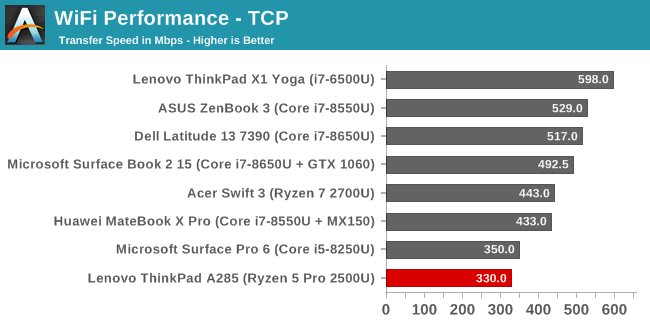
The results aren’t pretty. There are good wireless adapters available, and Lenovo often uses them, but this Realtek is not one of those. On a positive note, it was at least very stable during testing, with no disconnections or lost Wi-Fi like we do see on some of the competition. It just isn’t quick.
Audio
If you need a laptop for conference calls, the ThinkPad will work fine, but the stereo speakers which are downward facing do not offer much in the way of range, with almost no bass at all. They don’t get overly loud either, at just 75 dB(A) measured over the trackpad when playing our test track.
Thermals
Lenovo ships the Thinkpad A285 with software that lets you choose the fan profile for a High Performance Mode, or a Quiet Mode.
The fan profile is fairly tame though, even in the High Performance Mode, and even at maximum levels the laptop stays very quite at just 42 dB(A) measured 1-inch over the trackpad. That’s pretty decent for a thin chassis, but as for heat management, it isn’t great.
At 100% load, the system quickly peaks and then throttles down fairly significantly, with a long-term all-core load frequency of just 1600 MHz, well under the 2.0 GHz base of this processor. The temperatures are locked in around 72°C over a long workload, and CPU power draw is well under the 15-Watt TDP. The Thinkpad A285 is quiet, but don’t expect it to be a great device to crunch heavy numbers all day long.
Software
Lenovo is great for not shipping ThinkPads with a bunch of unwanted software, and the A285 is no exception. You can order the A285 with Windows 10 Home or Pro, or through a volume seller most likely any configuration you need.
One piece of software that Lenovo offers on the ThinkPads is Lenovo Vantage, which is a system configuration utility that also serves as a repository to check for hardware driver updates, check the battery condition, and more. The current version of Lenovo Vantage is a great looking application, and clearly some thought has gone into the layout.
One of the nicest features, which seems so small, is that Lenovo Vantage can do a Toolbar by the system tray that shows the current battery percentage. Although Windows 10 offers a battery indicator on the task bar, it’s tiny, and only shows the percentage when clicked on. The Lenovo Vantage toolbar is a better version, with a nice, easy to read indicator.
Lenovo also lets you set a battery charge threshold, which should extend the life of the battery if the laptop is mainly used on a desk. If this is enabled, the maximum charge will be limited to less than 100% to prolong the battery life. The software also has a detection method to determine if the laptop is plugged into an airplane outlet, and if so it will limit the performance to avoid drawing too much power. This is likely more useful on faster ThinkPads, but it’s a nice addition.
There’s also a System Update section which lets you manage driver and software updates from an easy to use pane of glass. It’s a great way to keep the system up to date for security and reliability without having to deal with each component on its own. Lenovo is not alone in offering this, but their implementation is very nicely laid out.
There’s also a hardware section where you can change the display brightness and color temperature for eye care, similar to Windows 10’s built-in Night Mode. Finally, you can scan the system for hardware issues and get support through the app as well.
Overall the Lenovo Vantage software is a nice addition to a business machine, with easy to use interfaces, and genuinely useful configuration options.


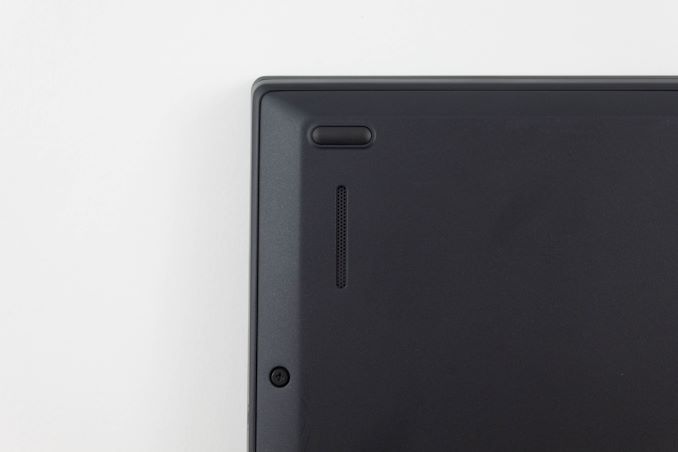
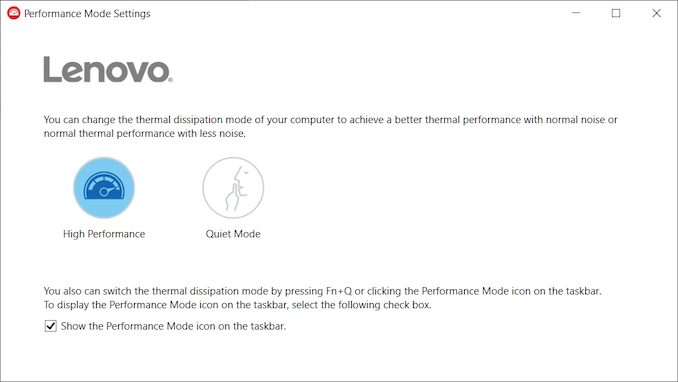
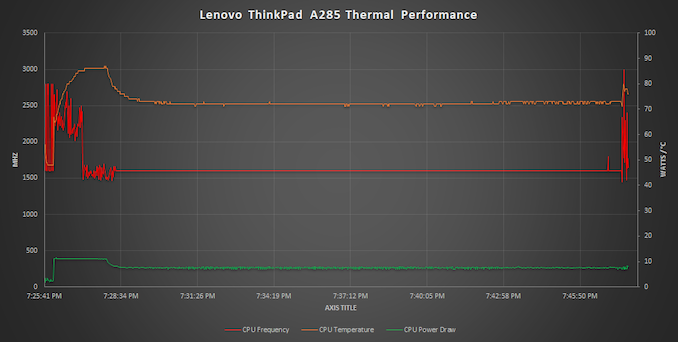

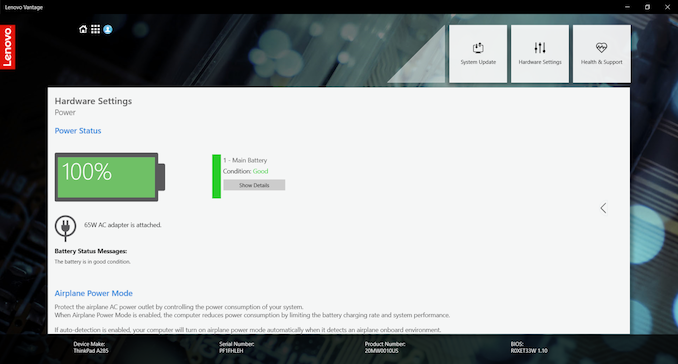

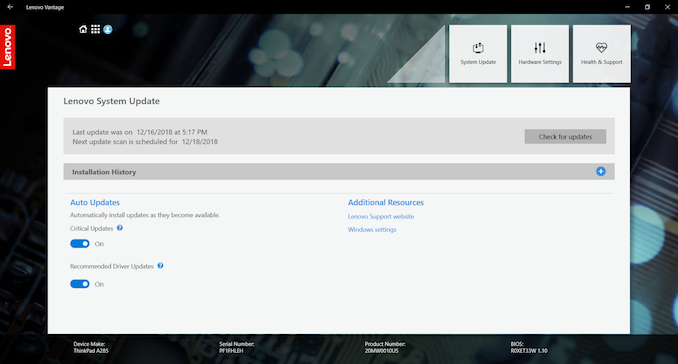
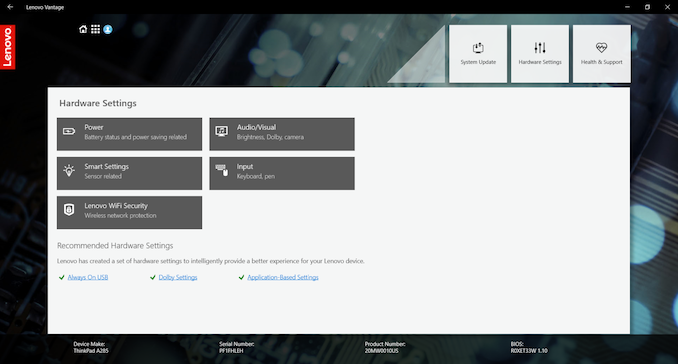








72 Comments
View All Comments
jardows2 - Tuesday, December 18, 2018 - link
This chassis is not too thin for an Ethernet port. Our organization just ordered in a bunch of HP probook 450's that are every bit as thin as this, and they all include an Ethernet port. To make Ethernet connectivity a dongle is just a stupid business decision made by Lenovo for this class of laptop.HStewart - Tuesday, December 18, 2018 - link
It not that thin of notebook, it include Type-A USB so it still fat notebook - I would think it possible to include ethernet at back part of it - probably a cost saving measure - just like the display.IGTrading - Tuesday, December 18, 2018 - link
I find it ridiculous that the reviewers felt the unexplained need of including 15" laptops and notebooks with a discrete video card and compared them with a 12.5" Thin&Light portable without a discrete GPU.Why the heck are we comparing plums to grapes and apples to pineapples ?!
The most basic journalistic "rules" for an initial review are to compare products priced similarly and of course, products with comparable specifications.
Does anybody care to compare a Lamborghini to a Ford K ? Sure those are both cars, both use petrol and both have 4 wheels ... but really !?!
You want to have an expert comparison between similar products from DIFFERENT product lines .... to show just how much extra performance does a larger chassis bring ... or a higher price ... ok, do it and present it as such.
Here's a 12" ThinkPad with X CPU vs a 15" ThinkPad with the same X CPU (or similar) and here is the extra performance the larger and more expensive product gets you.
But why the heck would you compare a 15" Microsoft Surface 2 with a discrete GPU costing 2300 USD with a 12.5" ThinkPad with just an APU (no discrete GPU) costing half the price ?!?!
Is this to bury the good test results of Lenovo's AMD-based ThinkPad and make it look mediocre ?!
If Ford launches a new Ford K ... what kind of reviewer will compare it and test it against the newest Ferrari ?!
This is being forced (on all reviewers) by Intel's PR team. You either do it, or next time you have ZERO access to anything Intel-related. (happened to me too, many years ago)
nico_mach - Tuesday, December 18, 2018 - link
It doesn't seem to have a great analogue in these numbers, true. But it is very close to the Surface Pro i5 results, which is much thinner and lighter, so it still doesn't look good. Unfortunately, the prices aren't listed in these performance results - so the dGPU and i7 that look so good aren't really in the same league, but we don't know by how much.The results are unfortunate, but this is still progress by AMD, considering where they were 2 years ago. And getting Intel to respond the way they have - buying AMD graphics, matching their core counts, moving on with a hybrid 10nm scheme - really shows how competitive they've become. And when was the last time Intel had to resort to dirty tricks? Unfortunately I think both Intel and AMD should worry more about Quallcomm and Apple than each other. This comparison is ultimately irrelevant.
DanNeely - Tuesday, December 18, 2018 - link
Adding the 1060 was arguably gratuitous; but all the fanboiing on the Ryzen mobile had been about how it was going to crush the competition so Intel's mainstream parts and NVidia's entry level MX150 are entirely appropriate. And Lenovo's performance here is just awful. With 8 clusters of GPU cores instead of 10 it should be able to do at least 80% of the performance of the 15W Ryzen 7 in the Swift 3 (and a bit closer should be expected since it can use its TDP to clock the GOU higher); but instead it's coming in around 2/3rds.StevoLincolnite - Tuesday, December 18, 2018 - link
There is allot of issues in regards to Ryzen mobile, drivers and TDP.In some instances, limiting the CPU will allow the GPU in the 2500u to run faster than the 2700u.
I have the Lenovo E585 myself with a Ryzen 2700u. - It does Overwatch, 60fps, 1080P at 56% scaling all settings low.
The driver situations is certainly bullshit though, my notebooks drivers are months out of date... AMD doesn't offer any newer revision... And if I "work around" the drivers and install unofficial ones, windows update will override it at a later date and downgrade them.
I honestly expected more out of it... Going to upgrade the Ram to 16GB with lower latencies and hope that might make a small difference. My next notebook will certainly have a discreet GPU.
IGTrading - Wednesday, December 19, 2018 - link
Yes, the mobile driver for Ryzen needs work and needs it quick. If OEMs don't give a crap about their customers and offer no decent support, AMD should step in with a Beta mobile driver. Doesn't need to be WHQL, doesn't need anything special ... just offer it.As for testing in exactly the same conditions, HP x360 has Ryzen and Intel models in the same chassis. When tested these two, AMD Ryzen trounced the Intel model.
Hul8 - Tuesday, December 18, 2018 - link
It's helpful to have the *one* token example with a discrete GPU, so readers can tell how much you give up by going integrated. Otherwise the review would be in a bubble of similarly handicapped systems.HStewart - Tuesday, December 18, 2018 - link
My comment was nothing about Intel - your response falsely assume it was.Most notebook users use notebook for word processing, spreadsheets and such and don't need descret CPU.
What does the GPU matter in comment about USB Size? I had to look up the specs to see what specs it had - is Vega 8 even descrete GPU? it not part of discussion - just falsely assume it was bias statement.
MonkeyPaw - Tuesday, December 18, 2018 - link
I agree when it comes to some of the performance tests. The dGPU model really skews the graphs by being so much better than iGPU models. Makes a comparison of similar models harder to do.